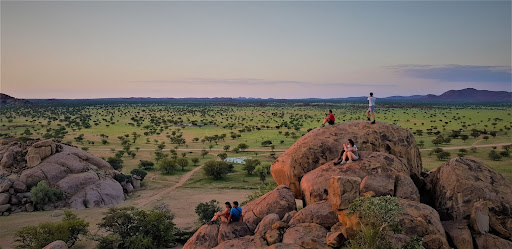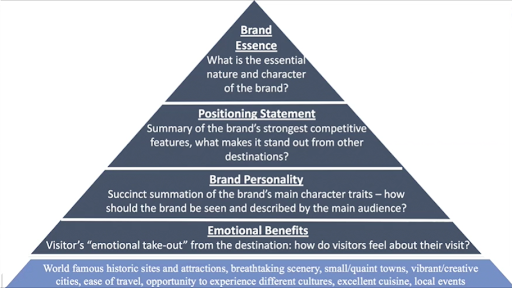Destination management is the process in which Destination Marketing Organizations (DMOs) work with stakeholders to increase development of the tourism sector, gain more tourists, address challenges, and bring more benefit to the local community. In the case of Solimar, this is also done while ensuring that this development is conducted sustainably, both from an economic perspective as well as an environmental perspective. This practice sounds simple in theory, but it can be a complicated process that requires coordination with a large group of people with diverse interests. Solimar is currently working in the Sugar River Region of New Hampshire to help develop a DMO from the ground up, as well as establish a website and marketing plan for the destination.
The Sugar River Region of New Hampshire is a picturesque New England destination that is made up of fourteen towns and one city. The region has hiking trails with scenic views, historic covered bridges, as well as quaint small-town charm as you travel from town to town. Solimar is partnered with the Sugar River Destination Council, the existing organization concerned with tourism, to assist in creating a Destination Management Plan that will benefit all the local stakeholders. The first step in this process was to create a DMO, and the Sugar River Region Destination Council (SRRDC) was established to coordinate and create, as well as conduct Destination Management.

Engaging Stakeholders in Destination Management & Understanding the Destination
To successfully manage a destination, it is important that the DMO fully understands the unique challenges and opportunities of the place. To understand your destination, you have to understand the tourists that are interested in visiting, as well as how to keep local residents satisfied. This holistic approach makes it very clear that different stakeholders and industries that are involved in tourism must be unified in their efforts in order to create a seamless experience for tourists.
Outside of the Sugar River Region example, Solimar has also created comprehensive Destination Management Plans in other regions of the world. Solimar’s work in Timor-Leste established a network of businesses that were key to the tourism sector of the island, and also assisted the community in creating a DMO. This community-based approach has yielded a lot of success for the local businesses throughout the island and has helped Solimar to hone its framework for creating and managing DMOs. 
In the case of the Sugar River Region, Solimar and the SRRDC worked together to consult with a wide variety of organizations and individuals to better understand the needs of the community, as well as the goals these stakeholders shared for the community. These talks were held with local governments, tour and transport operators, accommodation providers, educators, business owners, as well as residents from across the region. Once common goals for the region are established, the DMO can guide the Destination Management Plan in the direction it needs to in order to reach these goals. This is an important part of community-based tourism, which is crucial to creating a sustainable Destination Management Plan.
Understanding the goals of all the stakeholders involved in the destination is critical, but it is also important to understand exactly what the destination has to offer as well as its capacity to host tourists. Conducting research on tourism, as well as the impacts it will have on the region is vital in order to stay true to the holistic approach. For one, this research can underscore the potential pitfalls that could occur if destination management is not done incorrectly. These downsides could pertain to environmental, economic, or social concerns. These concerns must be addressed in the Destination Management Plan to ensure that the destination is developed in a sustainable manner. These studies can also identify key opportunities to further develop attractions to bring success to the destination.
When background research was conducted in the Sugar River Region, key opportunities for collaboration with local stakeholders were highlighted. For instance, they found that cultural events in the region could be expanded to attract more visitors while partnerships between local businesses and residents of the region could be enhanced to make decision-making and strategizing more collaborative.
Considering Infrastructure and Logistics in Destination Management
Once goals are established, it is important to evaluate the region’s capacity and infrastructure in order to determine how best to move forward. For instance, where are the closest airports to the region, and is it easy to get there from the airports once tourists have arrived? In less developed tourism industries abroad, this step is very important to destination management.
Luckily, in the case of the Sugar River Region, the area is close to three airports in Boston, Hartford, and Burlington. There are shuttles that run from two of these airports, but the most scenic way to see the area is to rent a car and use it for travel! The Destination Development Plan aims to encourage this, as it is an easy way to get around the area while still getting to see all the breathtaking sights before you. In fact, the Sugar River Region plans to promote designated Sugar River Region Scenic Routes, which will connect the towns and bring you near historical markers.
There are many moving parts within destination management. As previously mentioned, understanding the region and its residents is necessary to ensure that the DMO is promoting equitable and sustainable practices in tourism development. Tourism is a fast-paced industry, therefore coordination and constant communication among stakeholders is the name of the game. Some examples of these coordination efforts within the Sugar River Region project are:
- Ensure that campgrounds in the New England woods are properly prepared to host guests
- Organize with local accommodations and restaurants to boost their visibility to tourists
- Cooperate with cultural groups, such as the Claremont Arts Council to ensure that there are a myriad of events to encourage tourists to visit
- Work with local governments to establish a Visitor Center for tourists.
- Ensure that hiking trails are maintained and promoted
The DMO responsible for destination management also must ensure that the destination becomes successful, as this will bring more profits to the area and sustain the Destination Development Plan. Sustainability necessitates processes that are environmentally, socially and financially maintainable. Achieving this can be very difficult, but incredibly beneficial process to ensure that a destination’s tourism sector is developed sustainably.
Marketing & Destination Management
It is the role of the DMO to manage and coordinate with various organizations in the local tourism network. While this is the case, another important aspect of destination management is digital destination marketing. Digital marketing can change the reach of marketing campaigns for a destination from a local audience to a global one. Especially today, it is important that a destination has a strong digital footprint. With a strong digital footprint, it is easier for people to discover your destination and learn more about it.
The first step to building a strong digital footprint is to create a tourism website. This website should aim to not only promote the region, its attractions and its people, but also to encourage others to visit. In the case of the Sugar River Region, Solimar is currently working in conjunction with the SRRDC to make a website that will fit the destination’s needs. The website must ensure that campgrounds are listed online, as well as restaurants, and that events are properly listed and up to date. This requires a significant amount of information from the various stakeholders.
Creating a website itself is a significant undertaking, and it requires the same coordination between stakeholders that is necessary for the other aspects of destination management that have been previously discussed. The DMO must also ensure that social media posts are created which boost interest in the region and let tourists know that the destination has much to offer. Social media is a very powerful tool in increasing how much attention your destination gets, and destination management should account for utilizing social media to receive these benefits.
Destination management is an all-encompassing process that ensures that a Destination Management Plan is created and followed. The DMO responsible for destination management must ensure that all stakeholders are consulted, and that the destination is developed in a way that will help achieve these goals.
This is not an easy process, and one that requires careful coordination. However, by properly addressing these concerns, the Destination Management Plan will ensure that the destination becomes both sustainable and beneficial to all members involved, including the local government, the businesses and the community. The Sugar River Region is a great example of Solimar’s destination management process being put into practice. We encourage you to visit the area and see all that it has to offer!
Liked learning about Destination Management and want to hear more? Take one of our courses to learn more about destination management! Visit our Institute for Sustainable Destinations website today: https://institute.solimarinternational.com/








